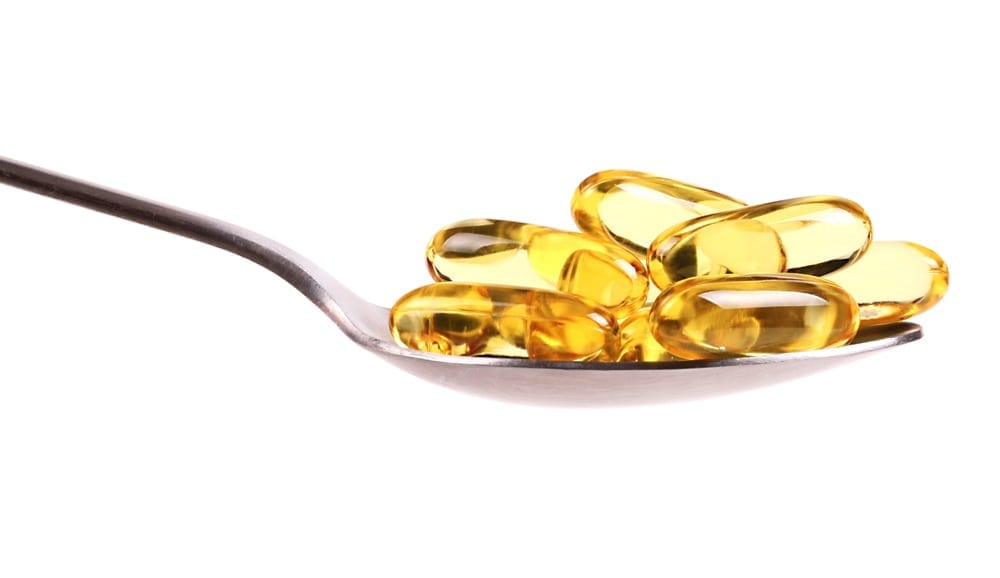How Much Omega 3 Per Day Should I Take?
If you pop a daily fish oil capsule – or drink a teaspoon of cod liver oil most mornings – it can be tempting to think you’re all set in the omega-3 department.
But research tells a different story: 4 out of 5 supplement users have low omega-3 levels (1).
Consuming enough omega-3s is associated with a myriad of benefits, from improved heart health and lower triglyceride levels, to reduced inflammation. But to fully cover your omega-3 needs, it often takes a higher dose than many anticipate to experience benefits.
Exactly how much omega 3 per day do you need? Let’s take a closer look at the research, and how to calculate the correct serving size based on your product.
First Things First: Why Is Taking an Omega 3 Daily Dose Beneficial?
Omega-3 fatty acids play many important roles in our bodies. They’re critical for reducing inflammation, supporting your microbiome, keeping your cell membranes flexible, and promoting healthy cell signaling (to name a few key functions) (2, 3).
Omega-3 fatty acids are predominantly found in fatty fatty fish like salmon, mackerel, and sardines. These types of fish provide the most potent forms of omega-3s, which are essential for achieving the full spectrum of health benefits. For those who don’t eat fish regularly, fish oil supplements offer a convenient alternative to ensure adequate intake of these vital nutrients.
Omega-3s have been linked to a reduced risk of various conditions, including mood disorders, pregnancy complications, joint problems, dry eyes, and much more. Ensuring sufficient omega-3 intake, whether through fish consumption or supplementation, is key to maximizing these health benefits.
What Kinds of Omega-3s Are Best?
The two most important members of the omega-3 family are called eicosapentaenoic acid (EPA) and docosahexaenoic acid (DHA), which are mainly found in oily fish and fish oil.
EPA and DHA aren’t the only types of omega-3 fatty acids that exist. However, they are considered to be the most potent. That’s why almost all omega-3 research in the last 50 years has focused on the health benefits of EPA and/or DHA specifically.
There’s less research about the effects of the plant-based omega-3 – ALA – that’s found in walnuts, flaxseed, and chia seeds. While our bodies have enzymes that convert plant-based ALA into EPA (and to some extent DHA), this conversion rate is negligible (4). For that reason, the strength of an omega-3 supplement is typically only measured by the amount of EPA and DHA it contains.

Not all omega-3 sources are equal: Plant-based omega-3 sources, like flaxseed and chia seeds, do not contain any EPA or DHA.
Most Americans Do Not Get Enough Omega-3s
In spite of the many benefits of omega-3 fatty acids, an estimated 95% of Americans do not have optimal omega-3 levels (5, 6).
Even those who take omega-3 dietary supplements on a regular basis can be deficient, as a study from Grassroots Health demonstrated. Of 494 supplement users, only 19% achieved adequate omega-3 index scores (1).
Why do so many supplement users struggle to get an effective omega-3 dosage?
While the reasons may vary from genetic differences to poor compliance, one big culprit is the surprisingly small servings of EPA and DHA found in most products. Indeed, fish oil capsules typically only contain 10 – 15% of the amount of omega-3s used in successful clinical trials!
Fish Oil Dosage Matters
These low EPA/DHA doses are problematic since research demonstrates that the effectiveness of omega-3s depends on the amount consumed.
Research has consistently shown that at least 2000 mg of EPA/DHA daily may be necessary for anti-inflammatory effects (7, 8, 9). Similarly, scientists have estimated that the average American adult needs 2000 mg of EPA/DHA daily to reach a healthy omega-3 index level (10).
For certain conditions – like rheumatoid arthritis and high triglyceride levels – studies typically find that 3000 mg of EPA/DHA daily and up are required for positive results (9, 11, 12, 13).
How Much EPA and DHA Is In Regular Fish Oil Supplements?
Fish oil capsules often advertise that they provide 1000 mg of fish oil, which sounds like a big dose. That is until you realize that fish oil is only partially made up of omega-3s.
Natural (ie. non-concentrated) fish oils contain a maximum of 30% EPA and DHA combined. With a regular 1000 mg fish oil capsule, that means you’re only getting 300 mg of EPA and DHA per gel cap. Non-concentrated krill oil capsules contain even lower percentages of omega-3s.
Concentrated omega-3 products contain higher levels of EPA and DHA per serving. But even with concentrated capsules, you’d typically have to swallow a small handful of pills to get a meaningful amount of EPA and DHA per day.
How to Calculate Your Fish Oil Dosage
To make sure you get an effective omega-3 dose, check the amount of EPA and DHA per serving listed in your product’s supplement facts.
While the exact levels of EPA and DHA will vary depending on brand and source, the below table shows the normal ranges:
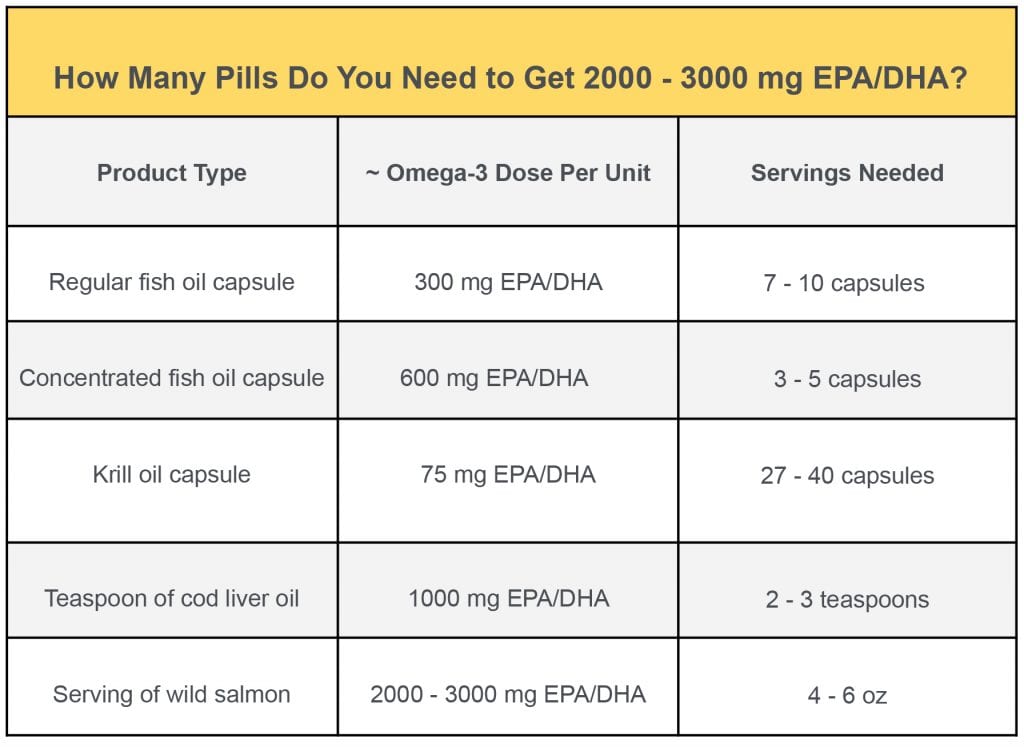
A hard-to-swallow truth: With many omega-3 supplements, you have to down a handful of capsules to get an effective dose.
Fish Oil Capsule Alternatives
Alternatives to capsules are better choices for many people. For instance, fresh liquid cod liver oil makes it easy to get more omega-3s in a few teaspoons (and may be better absorbed by the body as well).
Eating fatty fish – like sardines, salmon and herring – multiple times a week is another great way to get more EPA and DHA. If you eat fish, pay attention to whether the fish is wild caught or farm raised, as well as how you prepare your fish (so you don’t lose the majority of omega-3s during cooking) (14).
What’s the Right Omega 3 Dosage for You?
Taking 2000 – 3000 mg of EPA/DHA daily will cover most adults’ omega-3 needs. But other factors – like diet, genetics, lifestyle, age, body weight, health condition, and the bioavailability of the product used – also play a big role (15, 16).
To account for these individual differences, you can take a quick blood test to determine your omega-3 index level. Having an omega-3 index of at least 8% is considered most desirable for heart health.
Can You Take Too Much Fish Oil?
As mentioned above, most people around the world – especially in the USA – get far too little omega-3s. For that reason, there is not much research about whether or not there should be an omega-3 daily intake limit (17).
To date, the European Food Safety Authority has concluded that consuming up to 5000 mg of omega-3s daily is safe (18).
Dose Isn’t the Only Thing That Matters
While getting an effective EPA/DHA dose is one of the most important elements to making your supplement regimen work, you also have to consider the quality of your supplement.
How Fresh Is Your Fish Oil?
Freshness greatly impacts an omega-3 product’s potency and safety profile. Unfortunately, rancid omega-3 oil is a problem, with multiple independent studies showing that many omega-3 products exceed industry freshness standards at the time of purchase (19, 20, 21).
As an omega-3 supplement oxidizes, the amount of EPA and DHA in the oil decreases, meaning you may get less omega-3s than the label suggests.
More concerning are the damaging effects that rancid oil could have on your body. Research indicates that excessively oxidized fish oil may negatively impact cholesterol levels and could have a proinflammatory effect (22, 23, 24).
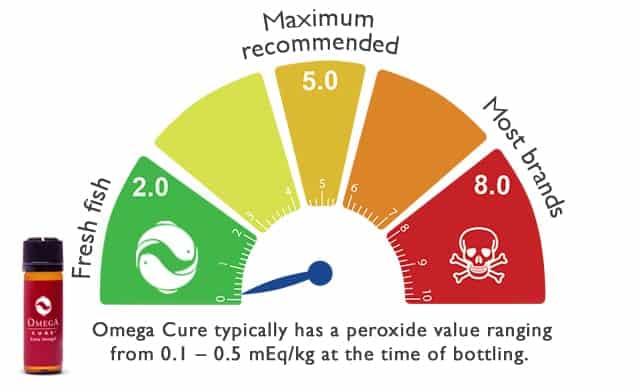
What’s considered fresh? Peroxide values measure an oil’s freshness level. Generally speaking, the lower the peroxide value, the fresher the oil is.
Is Your Fish Oil Full-Spectrum?
Natural fish oils contain a cocktail of beneficial omega-3 fatty acids and nutrient cofactors besides EPA and DHA. These nutrients all work together to support our health. Unfortunately, many omega-3 fish oil supplements are stripped of this rich fatty acid content through winterization and/or concentration.
Just like drinking filtered orange juice is not as healthy as eating a fresh orange, the more an omega-3 oil is processed, the less potent and bioavailable it becomes (25). This is why it’s important to look for omega-3 products that are non-winterized (full-spectrum) and contain a broader range of fatty acids than just EPA or DHA.
How Long Does Fish Oil Take to Work?
Once you begin taking an effective omega-3 dose, noteworthy results can start to happen. But, keep in mind that increasing your intake of omega-3s is not a quick fix.
Studies show that it can take between 3 to 6 months to saturate your red blood cell membranes with these beneficial fatty acids (26). It is generally recommended to wait 4 months before re-measuring your omega-3 index level.
Feeling the Difference
While getting enough omega-3s from supplements may sound complicated, it doesn’t have to be.
For instance, Omega Cure® Extra Strength delivers 3000 mg of EPA/DHA in single-dose vials without any fishy taste or smell.
Conveniently pre-measured, Omega Cure Extra Strength simplifies the omega-3 dose question. And best of all, you won’t have to keep counting capsules – or teaspoons – of fish oil ever again.
An Effective Omega-3 Dose, Made Simple
Experience the Omega3 Innovations difference for yourself with the most effective fish oil supplement on the market.
Buy Now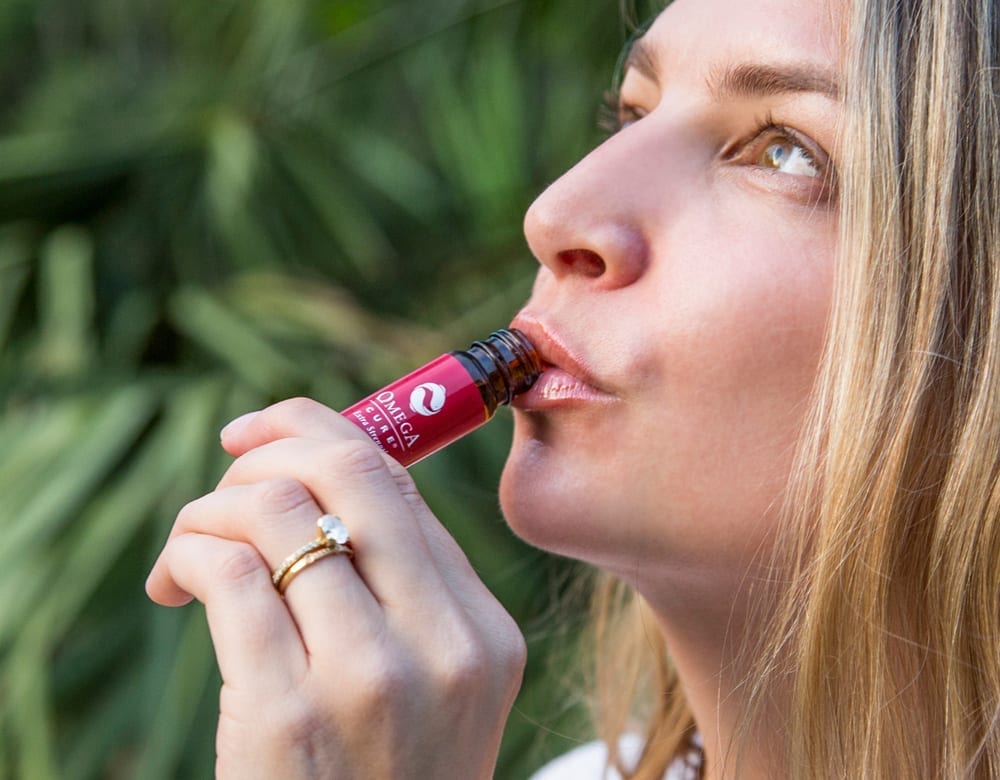
- Howard, K. (2019, March 12). The Optimal, Illusive Omega-3 Level. Natural Products Insider.
- Calder, P. (2018). Very Long-Chain N-3 Fatty Acids and Human Health: Fact, fiction and the Future. Proceedings of the Nutrition Society, 77(1), 52-72.
- Costantini, L., Molinari, R., Farinon, B., & Merendino, N. (2017). Impact of Omega-3 Fatty Acids on the Gut Microbiota. International Journal of Molecular Sciences, 18(12), 2645.
- Baum, S. J. & Scholz, K. P. (2019). Rounding the Corner on Residual Risk: Implications of REDUCE‐IT for Omega‐3 Polyunsaturated Fatty Acids Treatment in Secondary Prevention of Atherosclerotic Cardiovascular Disease. Clinical Cardiology, 42(9), 829-838.
- Daniells, S. (2015, December 10). Could Widespread Low Omega-3 Levels Be Putting American Hearts at Risk? Nutra-Ingredients-USA.
- Stark, K. D., Van Elswyk, M. E., Higgins, R., Weatherford, A., & Salem, N. (2016). Global Survey of the Omega-3 Fatty Acids, Docosahexaenoic Acid and Eicosapentaenoic Acid in the Blood Stream of Healthy Adults. Progress in Lipid Research, 63, 132-152.
- Calder P. C. (2013). Omega-3 Polyunsaturated Fatty Acids and Inflammatory Processes: Nutrition or Pharmacology? British Journal of Clinical Pharmacology, 75(3), 645–662.
- Tan, A., Sullenbarger, B., Prakash, R., & McDaniel, J. C. (2018). Supplementation with Eicosapentaenoic Acid and Docosahexaenoic Acid Reduces High Levels of Circulating Proinflammatory Cytokines in Aging Adults: A Randomized, Controlled Study. Prostaglandins, Leukotrienes, and Essential Fatty Acids, 132: 23–29.
- Fabian, C. J., Kimler, B. F., & Hursting, S. D. (2015). Omega-3 Fatty Acids for Breast Cancer Prevention and Survivorship. Breast Cancer Research: BCR, 17(1), 62.
- Daniells, S. (2019, August 23). New Study Unlocks the Doses Needed to Achieve an Optimal Omega-3 Index. Nutra-Ingredients-USA.
- Abdulrazaq, M., Innes, J. K., Calder, P. C. (2017). Effect of ω-3 Polyunsaturated Fatty Acids on Arthritic Pain: A Systematic Review. Nutrition, 39-40: 57-66.
- Hill, C. et al. (2009). The Use of Fish Oil in the Community: Results of a Population-Based Study. Rheumatology, 48(4), 441-2.
- DiNicolantonio, J. J., & OKeefe, J. (2020). The Benefits of Marine Omega-3s for Preventing Arrhythmias. Open Heart, 7(1), e000904.
- Scherr, C., Figueiredo, V. N., Moura, F.A., & Sposito, A. C. (2015). Not Simply a Matter of Fish Intake. Current Vascular Pharmacology, 13(5):676-8.
- Flock, M. R., Skulas-Ray, A. C., Harris, W. S., Etherton, T. D., Fleming, J. A., & Kris-Etherton, P. M. (2013). Determinants of Erythrocyte Omega-3 Fatty Acid Content in Response to Fish Oil Supplementation: A Dose-Response Randomized Controlled Trial. Journal of the American Heart Association, 2(6), e000513.
- de Groot, R., Emmett, R., & Meyer, B. J. (2019). Non-Dietary Factors Associated with N-3 Long-Chain PUFA Levels in Humans – A Systematic Literature Review. The British Journal of Nutrition, 121(7), 793–808.
- (2020, March 25). What Do Your Omega-3 Index Results Mean? OmegaQuant.
- (2012, July 27). EFSA Assesses Safety of Long-Chain Omega-3 Fatty Acids. European Food Safety Authority.
- Albert, B. B., Derraik, J. G., Cameron-Smith, D., Hofman, P. L., Tumanov, S., Villas-Boas, S. G., Garg, M. L., & Cutfield, W. S. (2015). Fish Oil Supplements in New Zealand Are Highly Oxidised and Do Not Meet Label Content of N-3 PUFA. Scientific Reports, 5, 7928.
- Jackowski, S. A., Alvi, A. Z., Mirajkar, A., Imani, Z., Gamalevych, Y., Shaikh, N. A., & Jackowski, G. (2015). Oxidation Levels of North American Over-the-Counter N-3 (Omega-3) Supplements and the Influence of Supplement Formulation and Delivery Form on Evaluating Oxidative Safety. Journal of Nutritional Science, 4, e30.
- Opperman, M., & Benade, S. (2013). Analysis of the Omega-3 Fatty Acid Content of South African Fish Oil Supplements: A Follow-Up Study. Cardiovascular Journal of Africa, 24(8), 297–302.
- García-Hernández, V.M., Gallar, M., Sánchez-Soriano, J., Micol, V., Roche, E., and García-García, E. (2013). Effect of Omega-3 Dietary Supplements with Different Oxidation Levels in the Lipidic Profile of Women: A Randomized Controlled Trial. International Journal of Food Sciences and Nutrition, 64(8): 993-1000.
- Rundblad, A., Holven, K., Ottestad, I., Myhrstad, M., & Ulven, S. (2017). High-Quality Fish Oil Has a More Favourable Effect Than Oxidised Fish Oil on Intermediate-Density Lipoprotein and LDL Subclasses: A Randomised Controlled Trial. British Journal of Nutrition, 117(9), 1291-1298.
- Albert, B.B., Cameron-Smith, D., Hofman, P.L., and Cutfield, W.S. (2013). Oxidation of Marine Omega-3 Supplements and Human Health. BioMed Research International, 2013, 464921.
- Dasilva, G., Boller, M., Medina, I., & Storch, J. (2018). Relative Levels of Dietary EPA and DHA Impact Gastric Oxidation and Essential Fatty Acid Uptake. The Journal of Nutritional Biochemistry, 55, 68–75.
- Neubronner, J., Schuchardt, J., Kressel, G. et al. (2011). Enhanced Increase of Omega-3 Index in Response to Long-Term N-3 Fatty Acid Supplementation from Triacylglycerides Versus Ethyl Esters. European Journal of Clinical Nutrition, 65, 247–254.
Popular posts
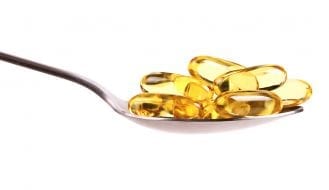

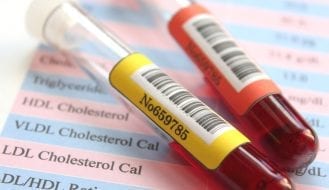
Related posts





